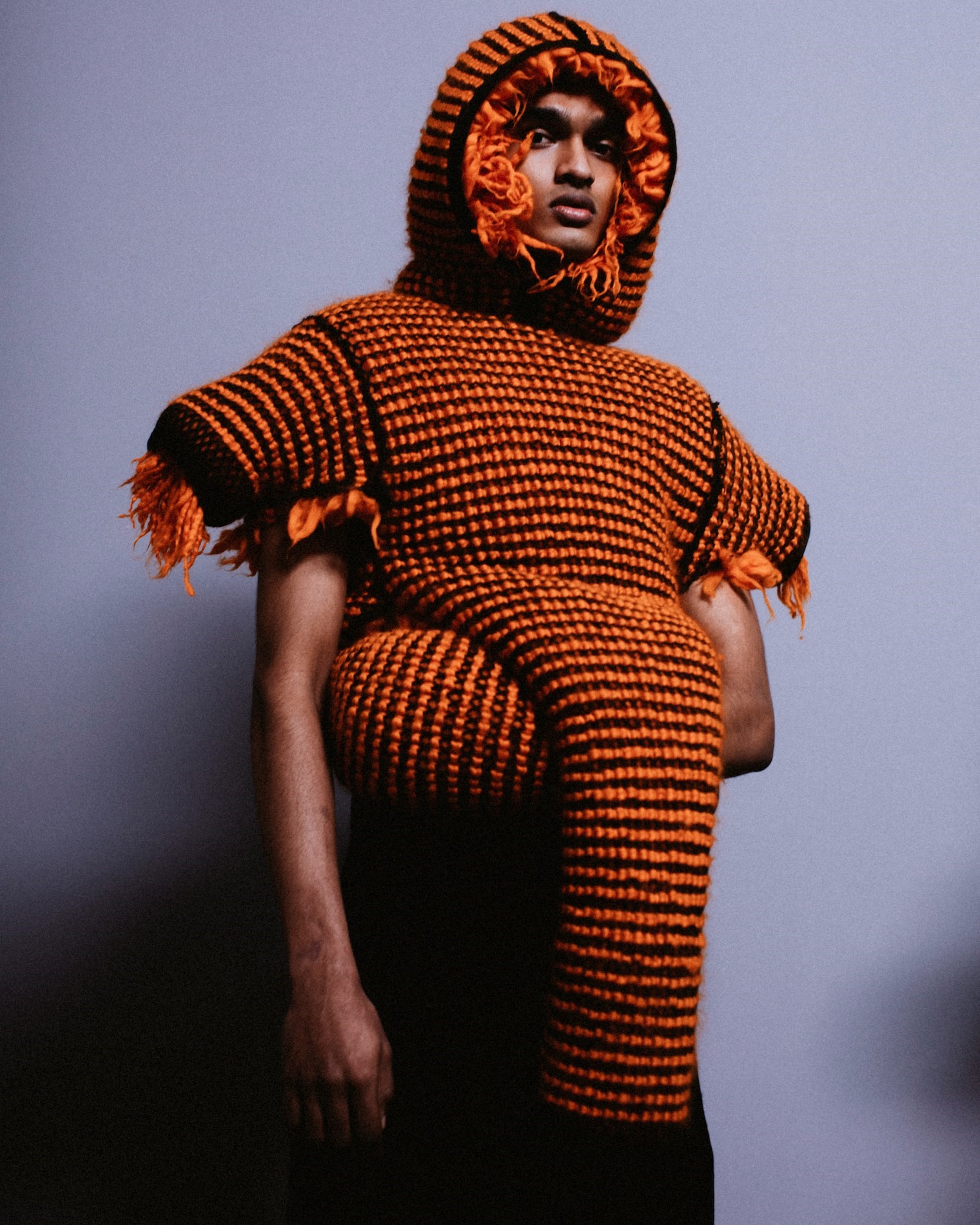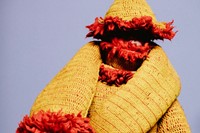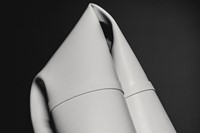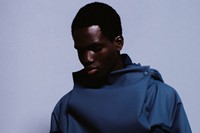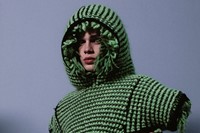Last week, in a factory located in the depths of east London, Craig Green returned to the runway for the first time in two years. The event was certainly the designer’s most sensory yet: while the audience looked on from seating constructed from water-filled flood tubing, past came a series of incredible colours, shapes and tactile textures which exemplified the designer’s career-long exploration of the space between the spiritual and the practical. It was, Green tells AnOther, about “feeling things again.”
As a designer, Green has always been fascinated with extremes. He put this best in his own poetic words in a conversation published in Another Man back in 2019: “the ideas of freedom and restriction, chaos and control, are what the work is constantly about.” Styled by longtime collaborator Robbie Spencer, this season’s collection focussed on the experience of the wearer, using divisive fabrics like mohair, latex, silk and leather, which one person might find comforting and pleasant to wear, but another might find uncomfortable or even suffocating. Green turned these materials inside-out so that the raw fabric, usually displayed to the outside world, would touch the skin and be experienced by the wearer.
This idea of how we experience clothing ran throughout, from ingenious packable pieces, which could be transformed from a bag into a jacket, to the collection’s more abstract sculptural designs, which were inspired by archival imagery of iron maidens and iron lungs – one being a medieval coffin-like torture instrument and the other a life-prolonging, though now antiquated, enveloping medical apparatus. Encasing latex sheets, bright red and blue inflatable looks, and padded out hooded wool creations played on these ideas of being wrapped up and protected, or restricted. Together, the looks formed a sensuous and emotion-rousing collection – one which Green describes as being, for the first time, optimistic in feeling.
Here, speaking in his own words, the designer reflects on his return to the runway and tells the story of his Autumn/Winter 2022 collection:
“Holding a runway presentation has always been a huge part of why I initially wanted to do fashion. I love to be able to put on a show where people can attend and experience something. So for us, it was really important to go back to doing something physical again, and it felt like the right time now. It was good to throw ourselves back in.
“Everything that we were doing was really linked back to that idea of an experience. So even with the show seating, we wanted the guests to feel something. The seating was water-filled tubing we got from a flood defence company. We thought it was amazing because when you sit on it, you can feel the other people on it too; the weight of the other people every time they sit down.
“The whole show itself we worked a lot with different textures and feelings. It all kind of started with a mohair jumper we found which was really fluffy on the outside. We turned it inside out and thought it was nicer that the wearer could experience it.
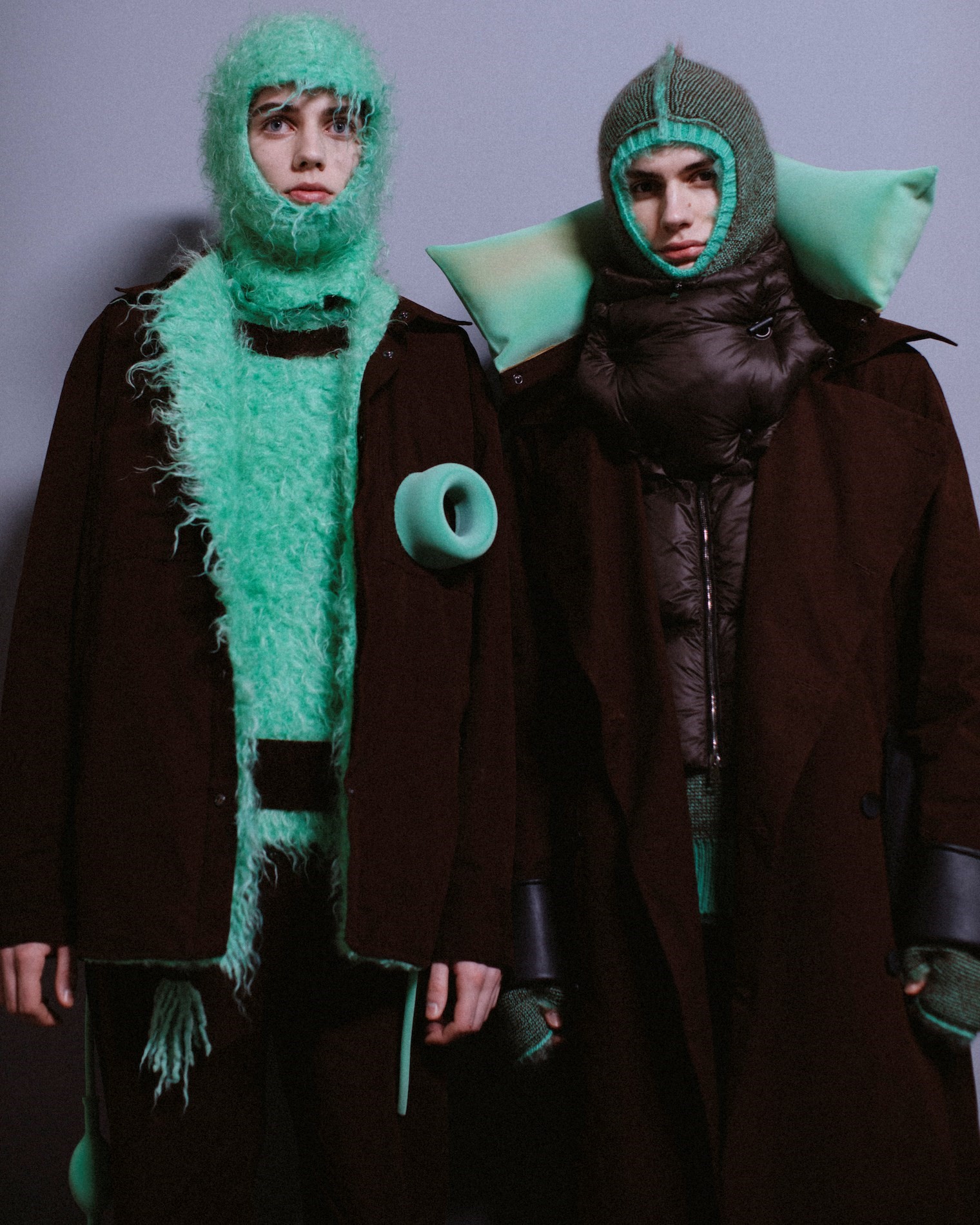
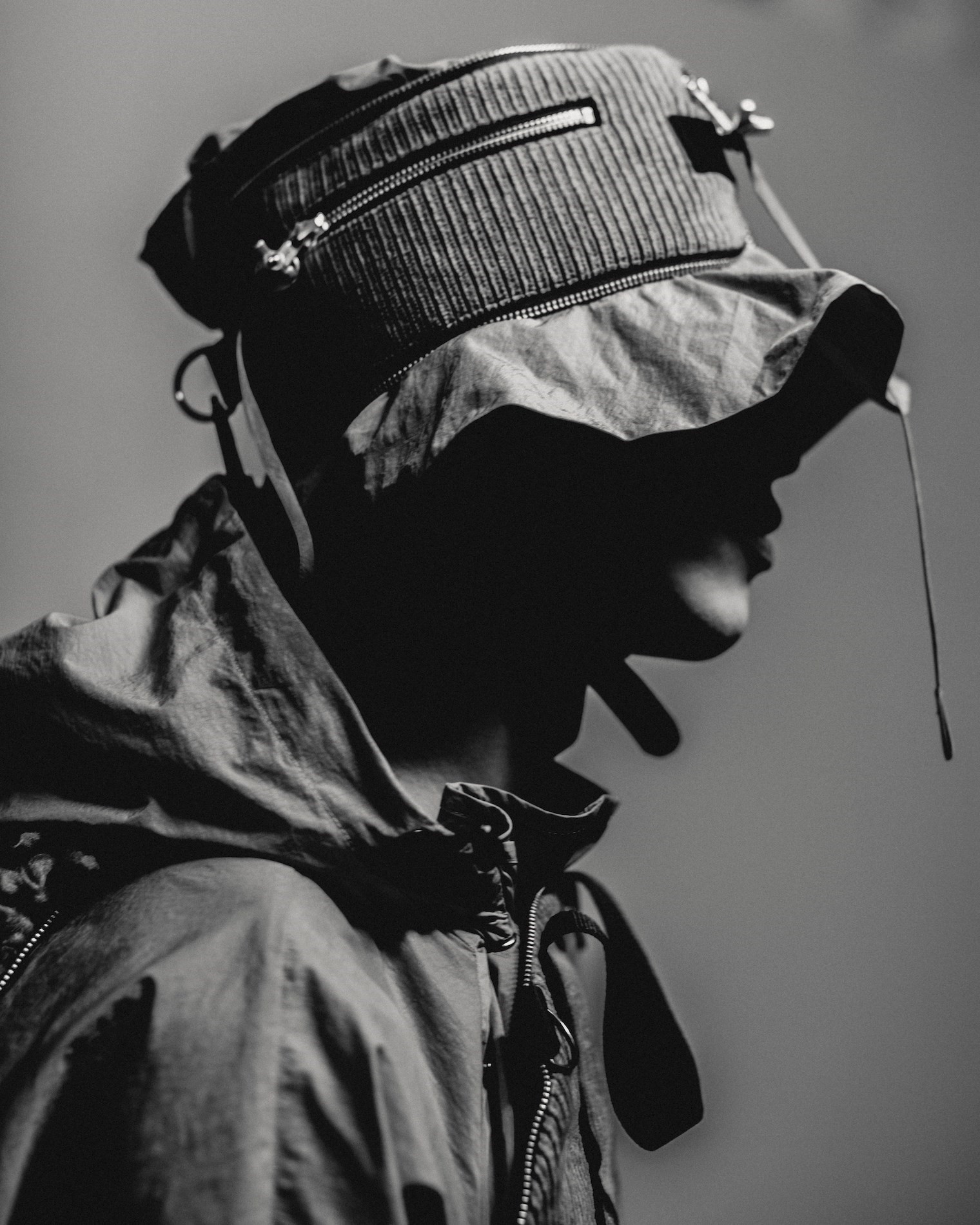
“It was strange with the mohair because when we started using it, the feedback from a lot of people was they hate the way it feels against their skin. I guess some people find it almost like a kind of disgusting or suffocating material to use. We thought that was kind of interesting as well.
“And that kind of idea also links to the Adidas shoes that we did this season. So the first six looks were a Stan Smith; but a cast of a Stan Smith, where the interior looks exactly like the trainer but from the outside, it almost looks like nothing. So I guess it’s an experience of wearing a Stan Smith rather than seeing it.
“This season we worked a lot with industrial factories that don’t usually work in garment production. There was a series of dip moulded latex bags, and they were made in a factory in the UK that makes medical gear – they make bladders for anaesthetic machines, and things that are used to train doctors and nurses how to clear airways. And we worked with a carpet-coating factory in Scotland to create that kind of strange texture on underlays, and another factory in Scotland who actually make candles for JCBs and buggies and things like that.
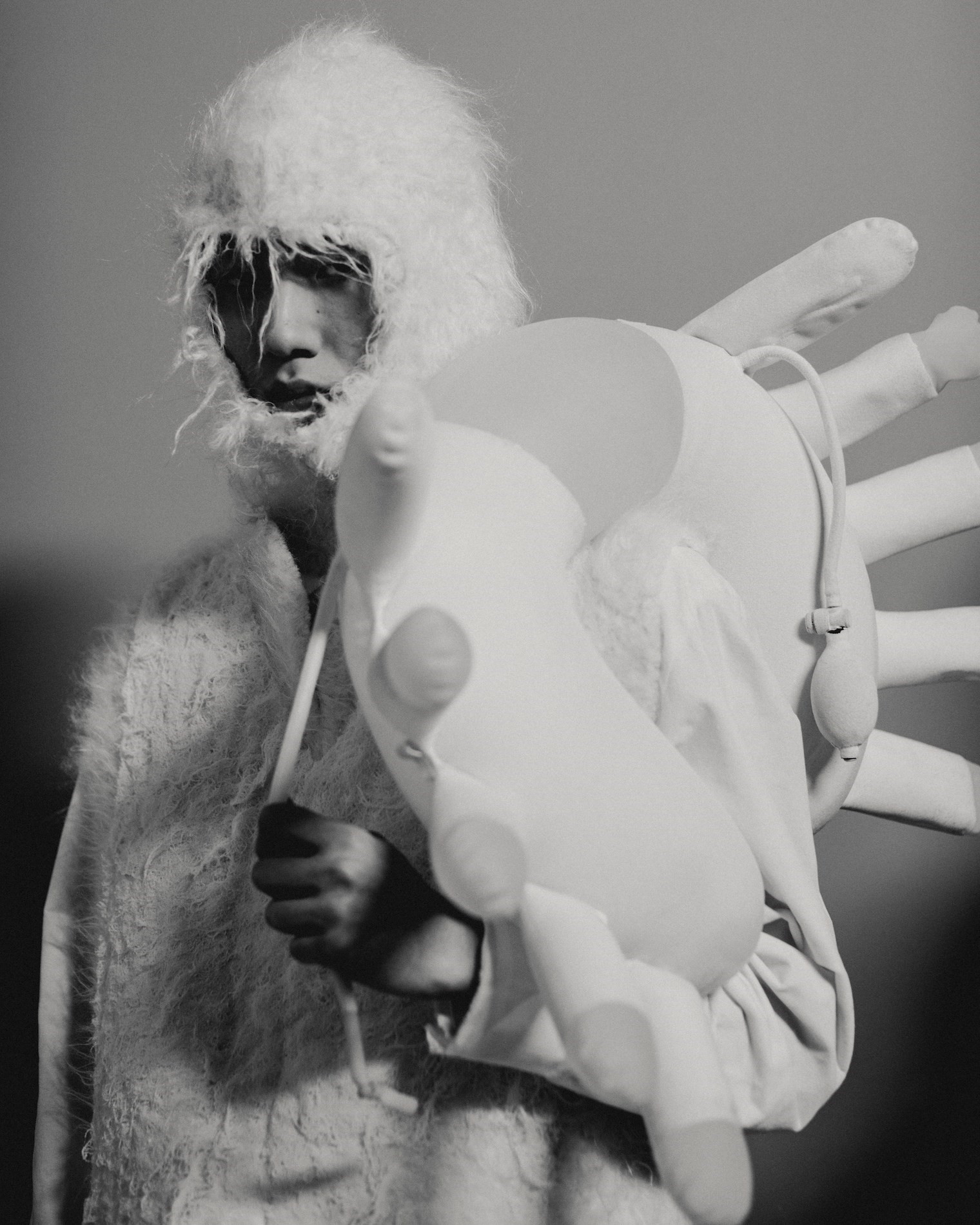
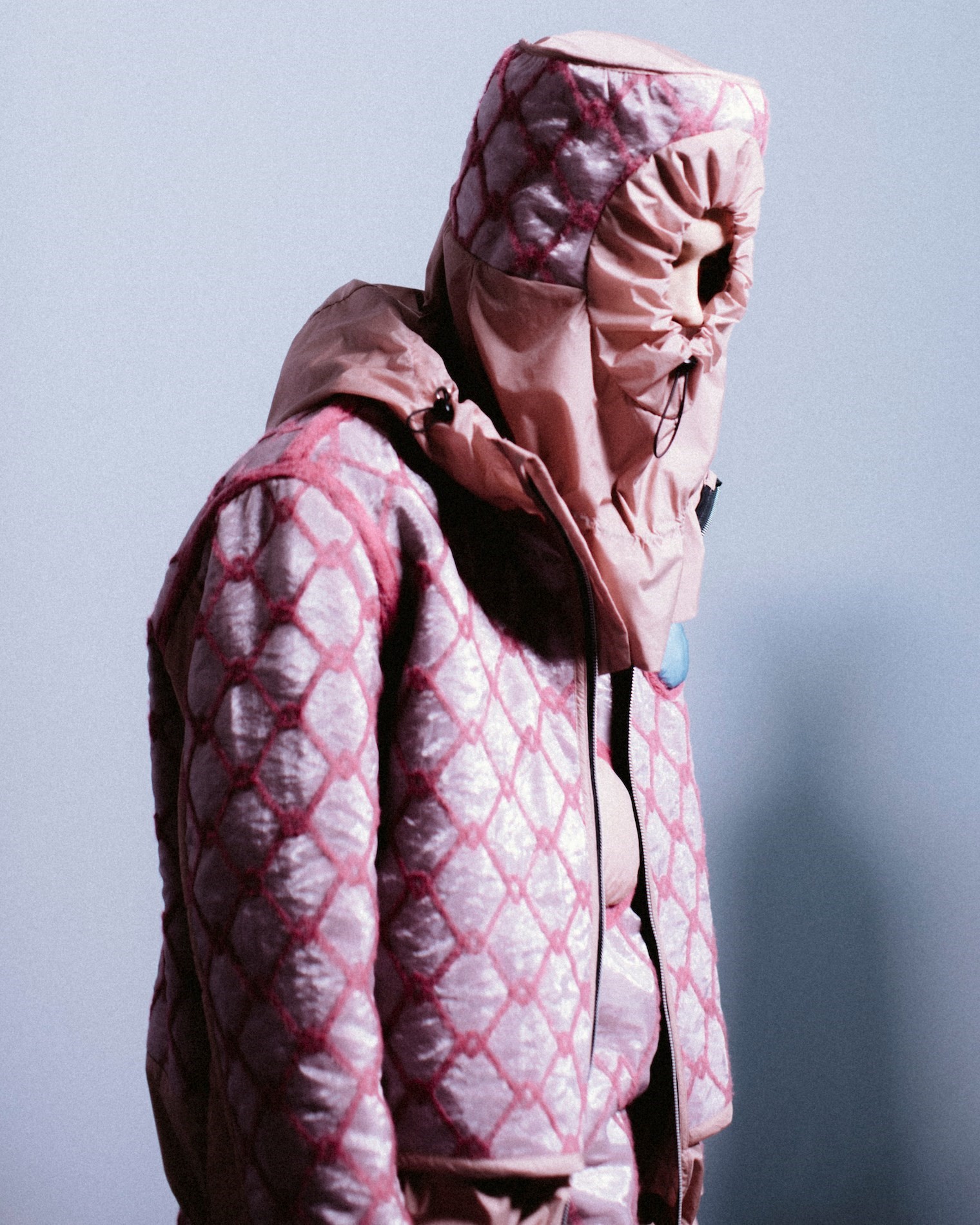
“The latex factory that we worked with creates medical pieces and we could only use the colours in production, so a lot of the colours weren’t even by choice. We used medical blue, natural latex and then that red shade. They were all functional in some way, but mixed together accidentally created some kind of strange, optimistic rainbow.
“I think that the choice of the materials throughout were quite raw, like rubber, silk, and denim. They are what they are. I also love the idea that some people hate those materials. For some people something might be the most comforting, luxurious material they could think of, but for others, it kind of repulses them. I like that play between those two extremes.
“All of the 3D pieces, like the inflatable sculptures and those rubber sheets, came from looking at iron lungs and iron maidens – the idea of making an encasing for the body that was protective, but also I guess, in a dark way, that restricts you, or restricts your senses.
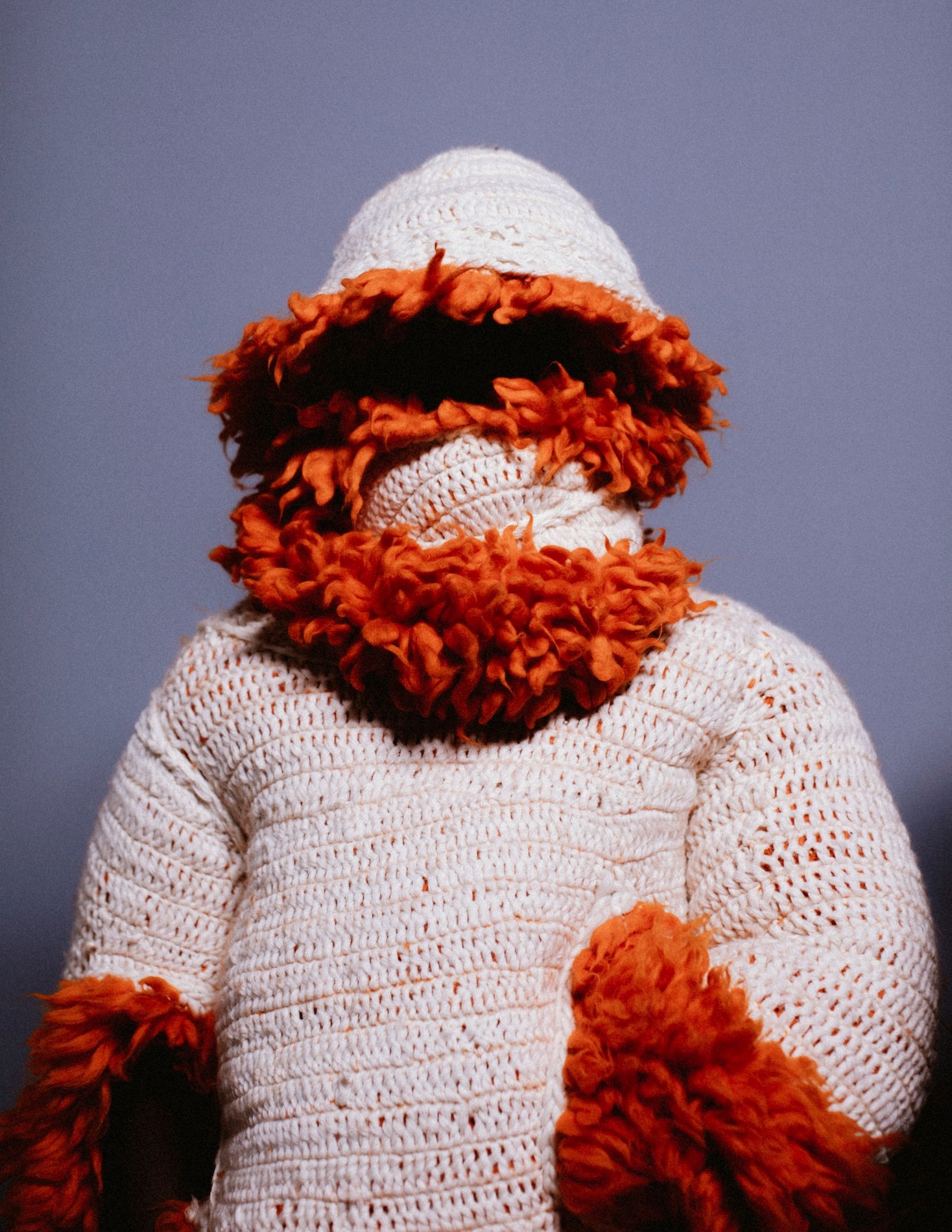
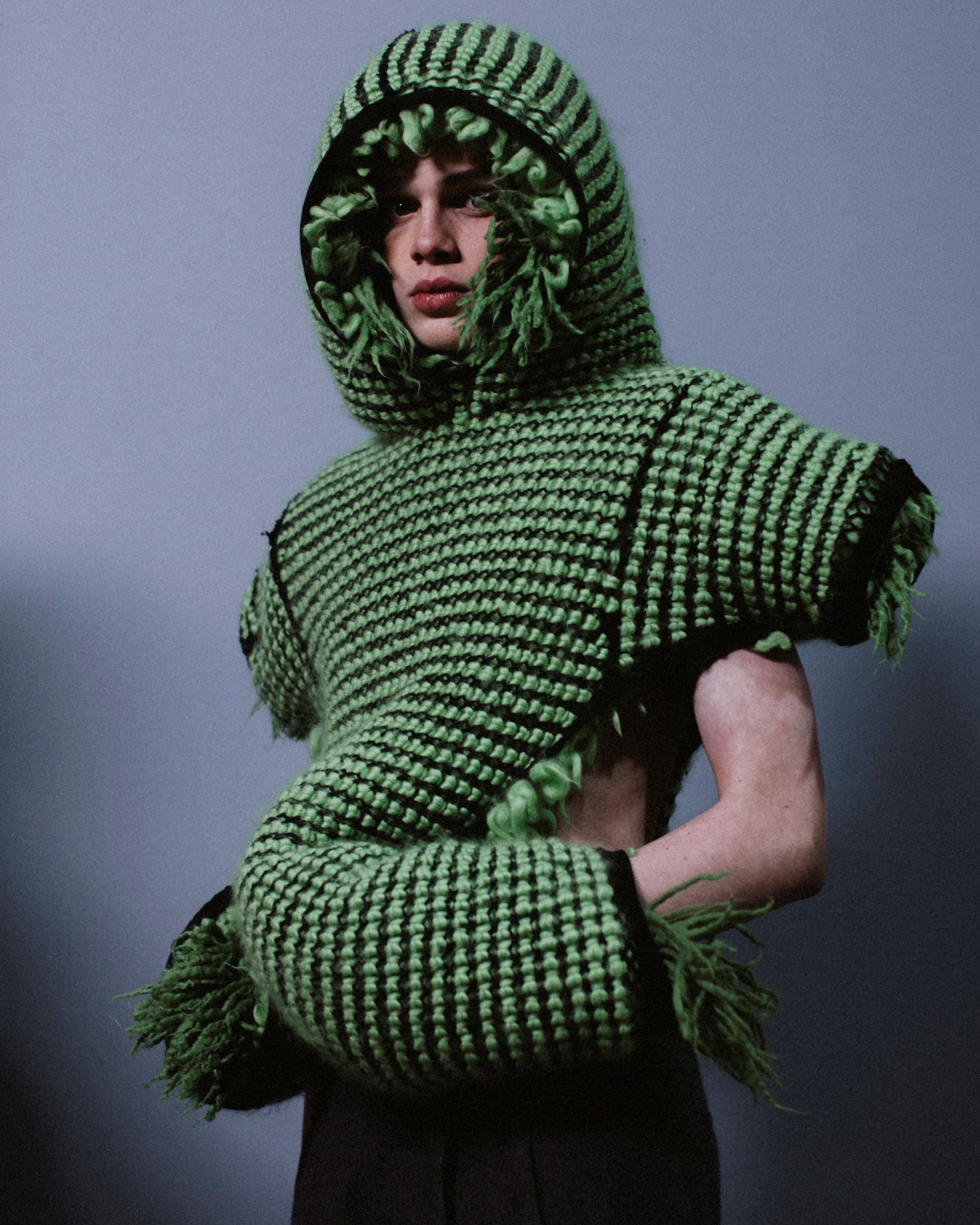
“The inflatable pieces were in reference to an iron lung, because we found all these images of a man that lived inside an iron lung for almost all of his life. I just thought it was such an amazing structure because there’s portholes along the sides of them, so other people could reach inside and care for his body. So it was all about other people touching you, you touching other people, and I guess that feeling of hyper-tactility went through the whole collection. It was about touching – and feeling things again.
“In everything that we work on, there’s a lot of these darker reference points – depending on who you are – but actually, there was an optimism for the first time in this collection. It was almost like an accidental optimism. So that kind of feeling was a new one for us.
“I think the pieces that explain the story the most are the knitwear pieces at the end – if you look on the inside, there’s so much handwork and so much suffocating volume, and from the outside, they kind of look clean or like a jumper. And I guess that kind of explains a lot about leaving the best part on the inside for you to experience rather than anyone else.”
